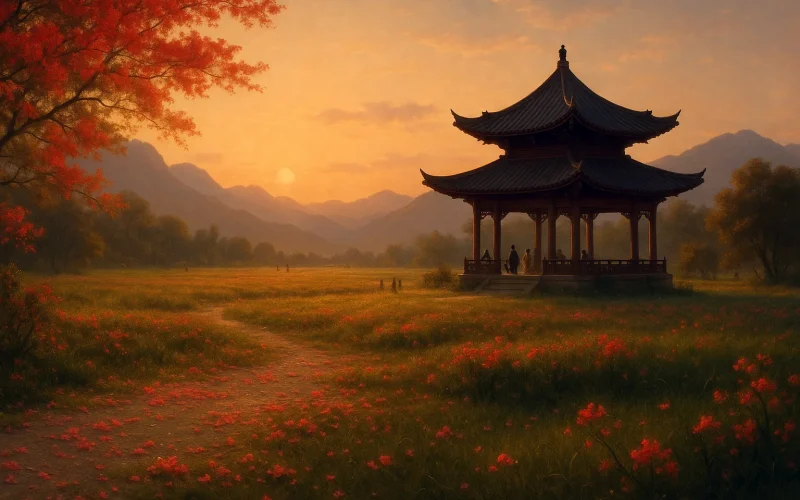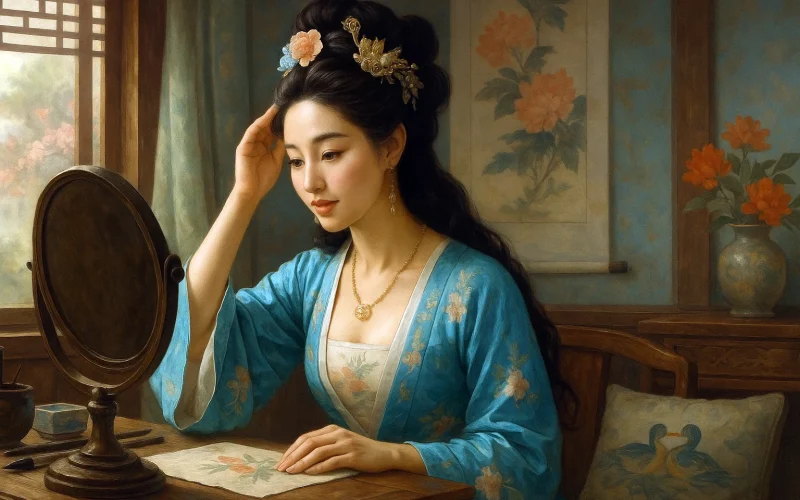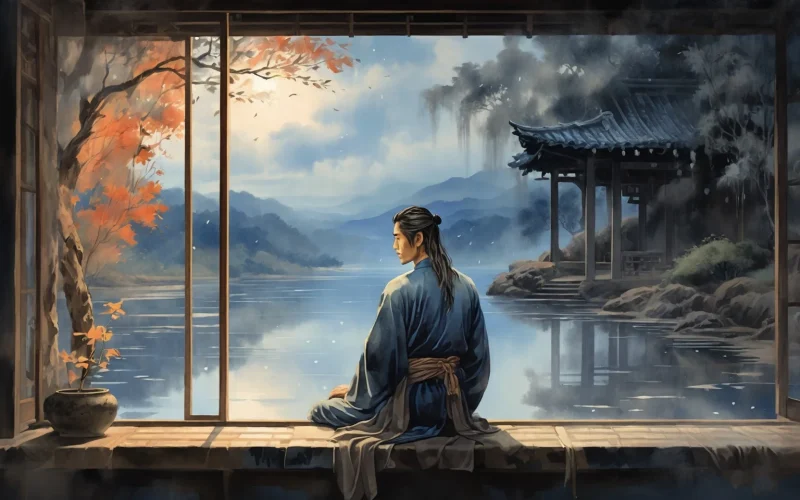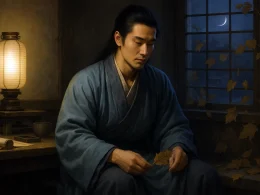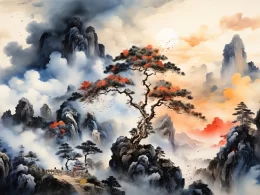Red-blossomed trees, blue mountains—the sun tilts low;
The vast meadow’s green stretches beyond sight.
Carefree visitors, heedless of spring’s fading glow,
Come and go before the pavilion, treading fallen blooms light.
Original Poem
「丰乐亭游春 · 其三」
欧阳修
红树青山日欲斜,长郊草色绿无涯。
游人不管春将老,来往亭前踏落花。
Interpretation
Composed in spring 1047 (the seventh year of Qingli era) during Ouyang Xiu's magistracy in Chuzhou, this poem belongs to a triad of "Spring Outings at Fengle Pavilion" written after he constructed this hillside retreat. Capturing late spring scenery around the pavilion, it expresses poignant appreciation for fading vernal beauty while reflecting the poet's post-political turmoil philosophy of finding solace in nature and communal joy—a testament to his resilient statesmanship and aesthetic sensibility.
First Couplet: "红树青山日欲斜,长郊草色绿无涯。"
Hóng shù qīng shān rì yù xié, cháng jiāo cǎo sè lǜ wú yá.
Vermilion trees against jade peaks—
The sun begins its slant.
Meadows stretch their emerald tides
Beyond the horizon's brink.
The couplet paints chromatic dynamism: arboreal reds (红树) and mountain blues (青山) frame the solar declination (日欲斜), while the infinite green (绿无涯) of grasslands suggests nature's inexhaustible vitality. This precise color-field composition, reminiscent of Song landscape painting techniques, encodes temporal transition through diurnal and seasonal markers.
Second Couplet: "游人不管春将老,来往亭前踏落花。"
Yóu rén bù guǎn chūn jiāng lǎo, lái wǎng tíng qián tà luò huā.
Carefree strollers, blind to spring's decay,
Crisscross the pavilion—
Each step a petal's sigh
Beneath their sauntering.
The shift to human activity introduces poignant irony: the revelers' "carefree" (不管) movement contrasts with the subdued pathos of trampled blossoms (踏落花). The synesthetic "petal's sigh" transforms visual imagery into auditory elegy, while the pavilion becomes a stage for unwitting participation in nature's cyclical farewell ceremony.
Holistic Appreciation
This seven-character quatrain captures the essence of late spring scenery and the poignant sentiment of cherishing the fading season. Standing before the Pavilion of Abundant Joy, the poet gazes upon the countryside, painting a vivid tableau of crimson trees, emerald mountains, lush grass, and falling petals—all bathed in the slanting light of the setting sun. As the imagery transitions, so does the mood: spring ages, yet the awaited one has not returned; the landscape withers, but affection remains. The poem flows seamlessly from scene to emotion, where scenery breathes feeling and feeling lingers in the scenery, creating an artistic atmosphere both delicately tender and luminously expressive.
The line "Carefree visitors heed not spring’s growing old" is particularly striking, weaving a thread of melancholy into the fabric of joy, revealing a nuanced nostalgia amid revelry. This resonates deeply with the imagery of falling flowers, carrying profound implications. The understated conclusion leaves a lasting aftertaste, much like Ouyang Xiu’s famous line "Tearful eyes ask flowers, but they do not speak; / Petals in chaos fly over the autumn swing." Here, the lament for spring’s passing lingers endlessly.
Artistic Merits
- Vibrant Colors, Elegant Composition: The visual palette—crimson, azure, green, sunset hues, and drifting petals—bursts with the fervor of spring.
- Scene and Sentiment Fused, Movement in Stillness: The first couplet depicts stillness; the second introduces motion through flower-treading visitors, adding fluidity and layering to the imagery.
- Emotion Embodied in Objects, Subtle and Profound: Though "spring’s growing old" and "falling flowers" hint at sorrow, the poet avoids direct lament, instead using "carefree visitors heed not" to transmute grief into joy—a joy tinged with unspoken tenderness.
- Minimalism with Depth, Emotionally Stirring: In just twenty-eight characters, the poem unifies nature, season, human activity, and the poet’s own mood, showcasing masterful artistic economy.
Insights
This poem reminds us that life, like spring, is fleeting. Through falling petals and the lament for the season, Ouyang Xiu mirrors our own longing to cherish life’s beautiful moments—a dialogue with both nature and existence itself. Amid life’s busyness and transience, if we, like the poet, pause to observe the seasons’ turn and tread lightly among the blossoms, we may find infinite wonder and love within finite time. More than a spring outing verse, this poem embodies a transcendent yet fervent approach to living.
About the Poet
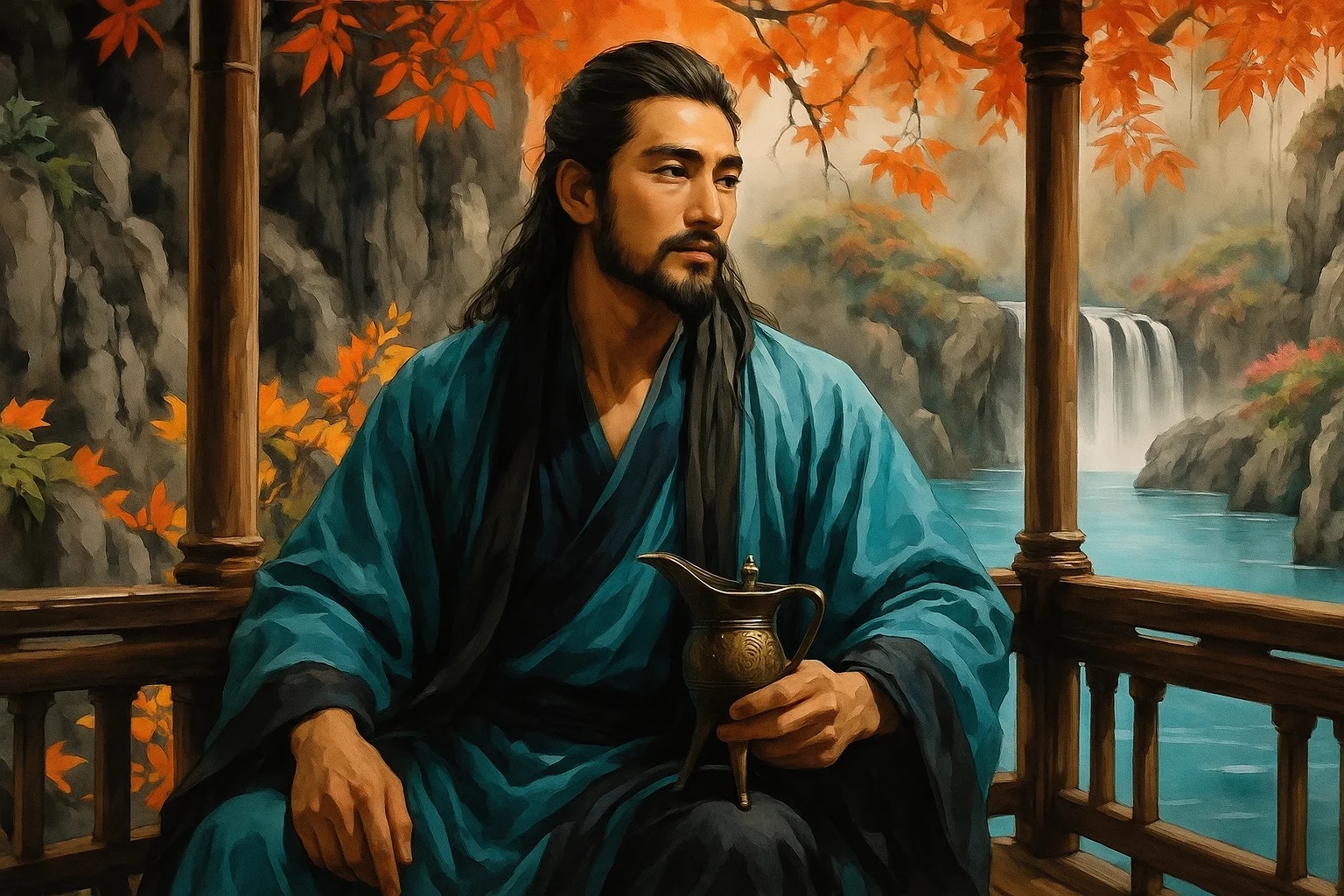
Ouyang Xiu (欧阳修, 1007 - 1072), a native of Yongfeng, Jizhou (present-day Jiangxi Province), emerged as the preeminent literary figure of the Northern Song Dynasty. After attaining the jinshi degree in 1030, he spearheaded a literary reform movement that rejected the ornate Xikun style prevalent at court. As a mentor who nurtured literary giants like Su Shi and Zeng Gong, he laid the foundation for the golden age of Northern Song literature. Recognized as one of the "Eight Great Prose Masters of Tang and Song," Ouyang stands as the pivotal figure in the transformation of Northern Song literary culture.






